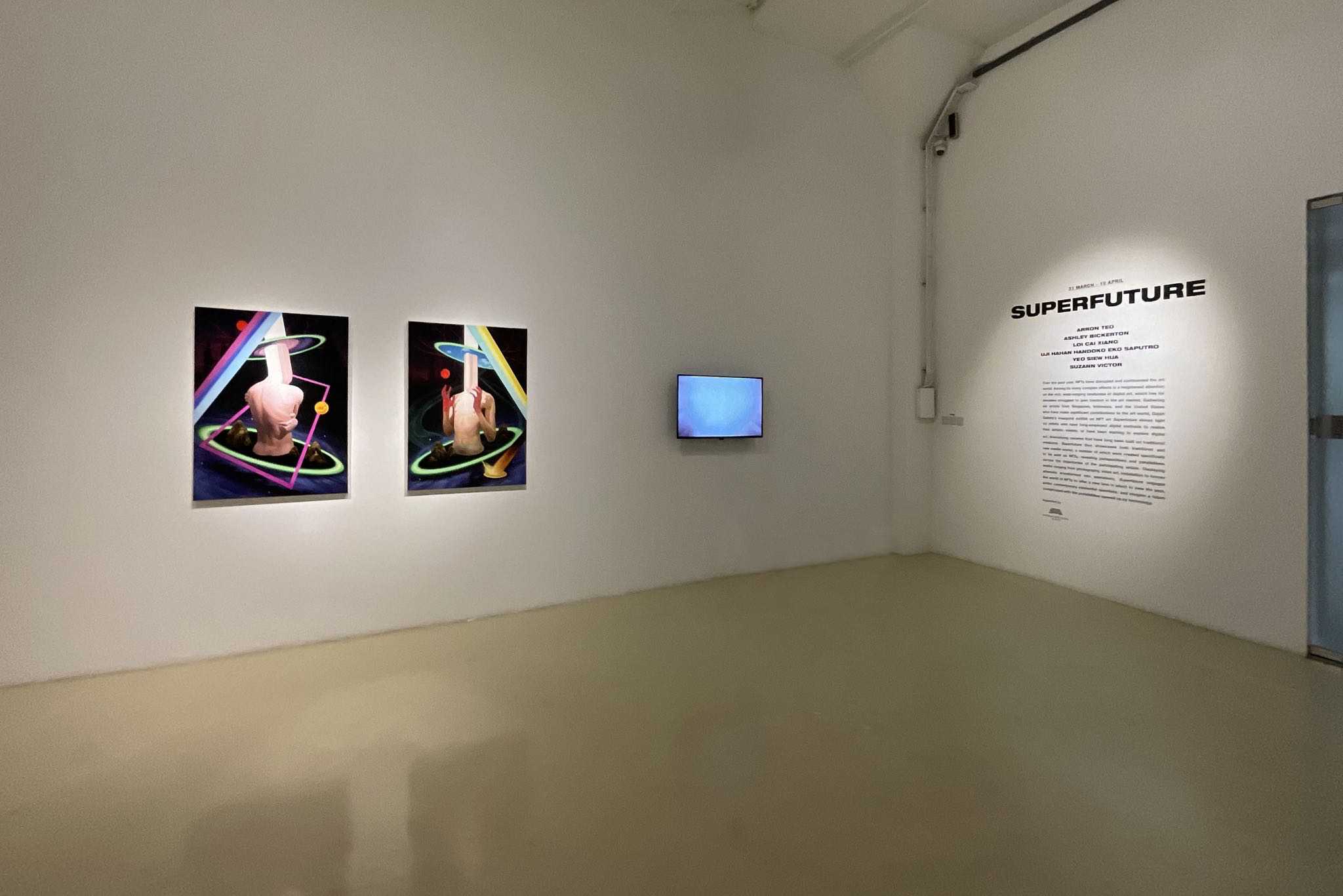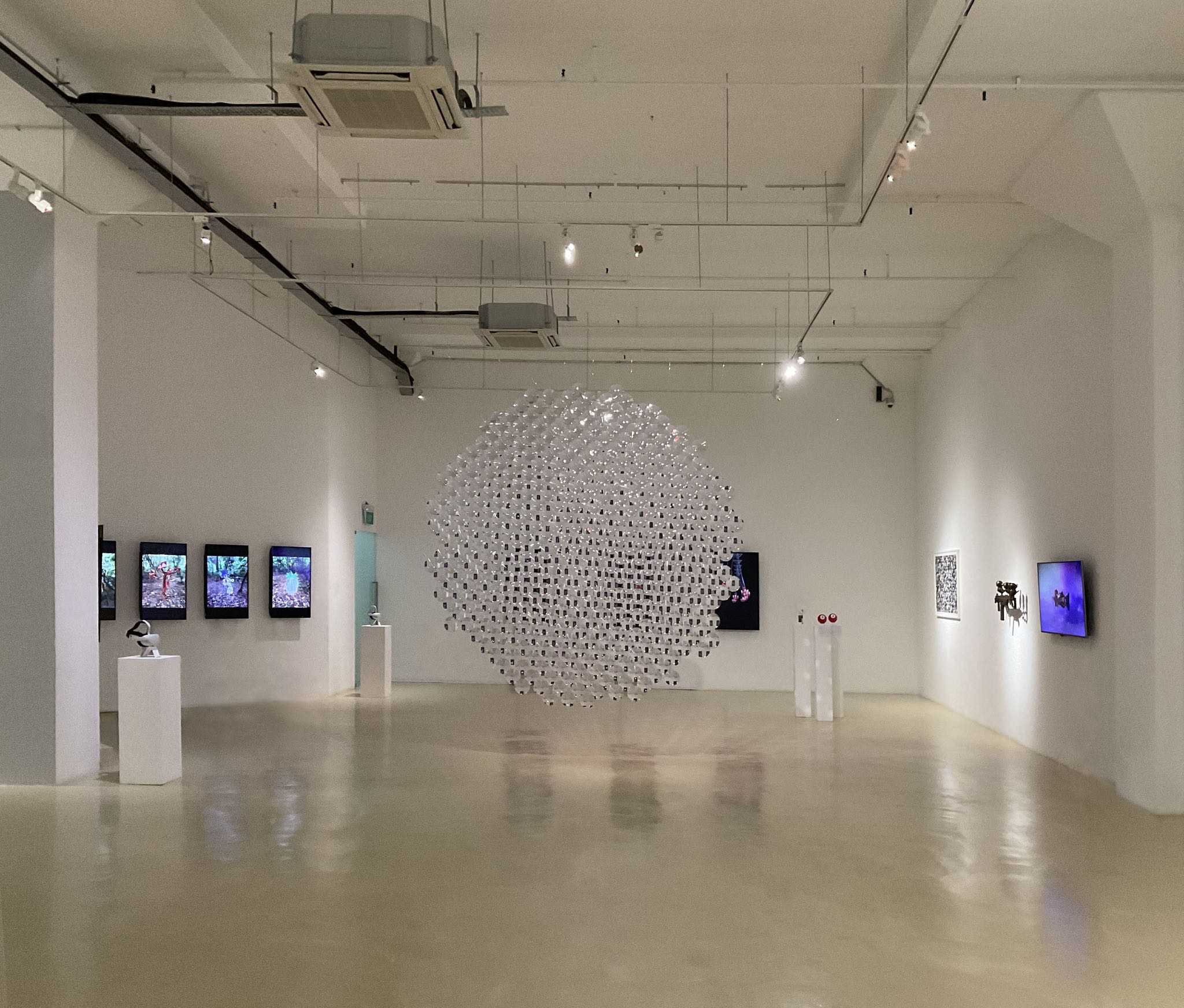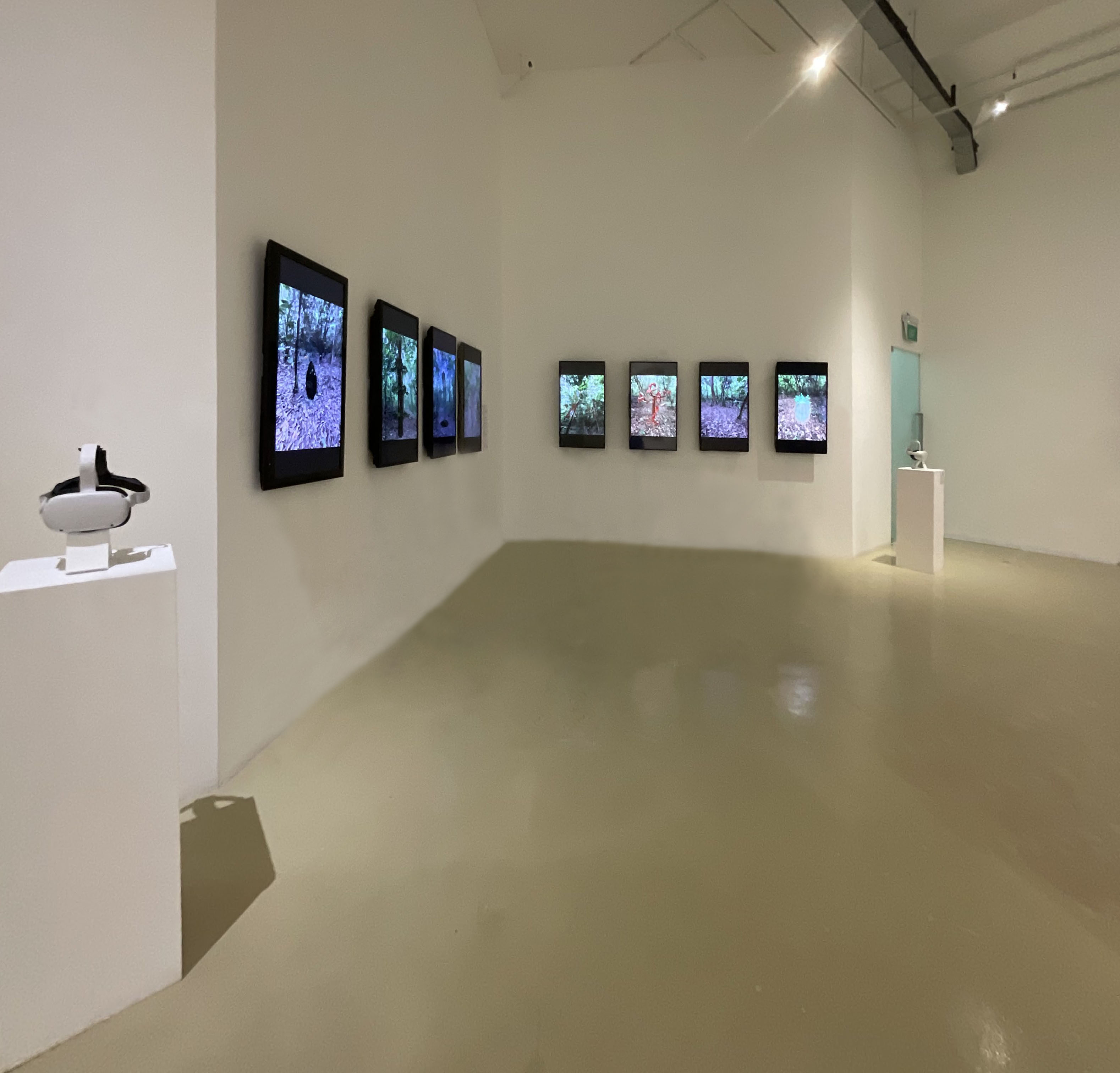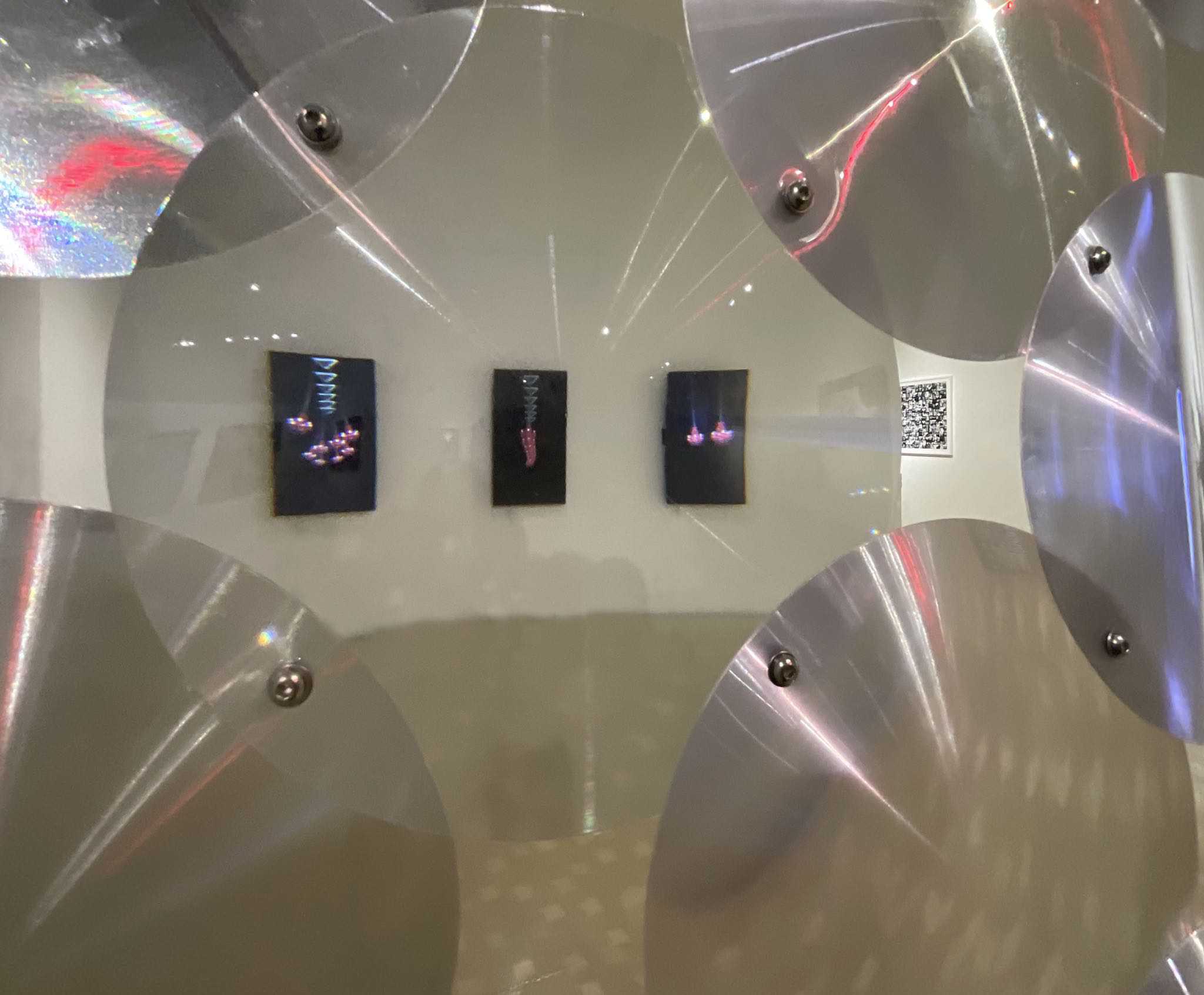
Organisation Transformation Grant Case Study
Gajah Gallery - Experimenting With NFTs
Project Overview
A traditional art gallery set out to transform the way digital art is seen, valued and experienced in Singapore and Southeast Asia. Gajah Gallery created one of the first Non-Fungible Token (NFT) visual arts exhibitions in Singapore, as a platform to help artists experiment with digital forms and educate art collectors on NFTs.

Challenge
Since the beginning of 2021, the art market has seen a surge of interest in digital art mediums from artists, critics, collectors, and aspiring collectors. However, artists often did not have the tools, resources and knowledge to translate their works into digital forms such as NFTs. Similarly, art patrons were also unfamiliar with the process of collecting NFTs even though they desired to keep up with the rapidly evolving art landscape.
The Vision
For the art ecosystem—artists, collectors, curators, gallerists, educators, cultural workers—to be open to new forms and media, and be bonded by a common purpose of working towards a more inclusive, accessible art world.

Outcomes in a Nutshell
22 NFT artworks were created in collaboration with artists and digital practitioners
37.5% of surveyed artists are interested in making NFT art
Impact
A large number of collectors became more familiar with digital art and NFTs, and would consider acquiring them more seriously. The artists became more confident in using digital media and participating in digital art exhibitions. The gallery plans to continue showing digital works in future exhibitions. Overall, Gajah Gallery has created opportunities for artists, collectors, curators, and patrons to explore new ways of creating and interacting with art in nascent NFT space. This potentially benefits the development of the visual arts scene as a whole.
3-2-1 Learnings
“[You need] a lot of humility and patience, but ultimately it will pay off.”
3 Must-Dos
Things you must absolutely get right
- Tap into the right experts and consultants. Seek out the best professionals who can guide the team, especially when this is not your field of expertise. “It will not only have consequences in the quality of the final works, but in the entire learning experience,” said Joseph Kong, Sales Manager of Gajah Gallery.
- Use high quality equipment and technology to achieve the best results for the artists.
- Maintain regular and clear communications with the artists and all the technicians involved, making sure their needs and desires are met
2 Do-Next
Critical next steps to sustain the effort
- Constantly educate yourselves on the latest developments in the field. “Even as you gain significant expertise, always be open to learning and looking for ways in which you can improve.”
- Ask for feedback. Surveys are concrete ways to determine if the works resonate with your audiences
1 Do-Differently
What they wished they had done differently from the start
- Allocate more time to create and install some of the digital works. Because it was the first time the gallery worked with NFTs and digital art, it underestimated the time it would take to complete and polish the works. As a result, a few works could not be finished in time for the opening of the show.
Challenge
Prior to the rise of NFTs, digital art has struggled to gain traction, despite having been around since the 1980s. Since the beginning of 2021, the art market has seen a surge of interest in digital art mediums from artists, critics, collectors, and aspiring collectors.
However, there remains an accessibility gap for both artists and art patrons. Gajah Gallery observed that artists who wished to explore NFTs often did not have the tools, resources and knowledge to translate their works into digital forms. Similarly, art patrons who desired to keep up with the rapidly evolving art landscape were also unfamiliar with the process of collecting NFTs. As Gajah Gallery deals primarily with traditional media, its staff were also unfamiliar with the processes of creating, exhibiting and collecting digital art.
The Vision
Gajah Gallery’s ideal world is one in which a diverse cast of characters—artists, collectors, curators, gallerists, educators, cultural workers—are open to new forms and media, while at the same time engaging in healthy, thoughtful discussions on how these changes are affecting everyone in the arts. Ultimately, everyone would be bonded by a common vision of working towards a more inclusive, accessible art world.
At the same time, a long-time mission of the gallery is to increase the international visibility of artists from Southeast Asia. In order to support them, the gallery makes an active effort to educate itself on global artistic trends and find ways to engage its artists who are curious to expand their practices.
Having operated in Singapore for 25 years and with extensive networks, Gajah Gallery felt it could bridge the NFT gap for artists and collectors. The gallery’s vision was simply to let artists and art collectors build confidence in participating in digital art exhibitions. The first step towards that goal was to create an NFT exhibition as the medium to let artists experiment with creating NFTs, and bring together traditional and digital art collectors to discuss the viability of NFTs.
The Journey
Discovery. Learning-by-Doing. Overcoming Challenges.

Product
Gajah Gallery set out to create one of the first NFT showcases in Singapore. Over a 7-month period, it aimed to work with 4 artists to create an online NFT exhibition with 64 minted NFTs (with each artist producing 2 works of 8 editions), as well as a
physical NFT showcase with 16 works. During the exhibition period, the gallery set out to meticulously gather survey results and metrics.
First, it invited artists who were already working with digital media, or who expressed the desire
to expand their practices to NFT art, to create works for the exhibition. Spanning across generations and geographies, the roster of artists included Suzann Victor, Arron Teo, Uji ‘Hahan’ Handoko Eko Saputro, Ashley Bickerton, and Loi
Cai Xiang. It then tapped on animators and Financial Technology (FinTech) consultants to aid the process, crucially helping the artists realise their artistic visions.
“Transitioning the works of artists who had built their
careers on traditional mediums into the digital realm was not easy,” recounted Joseph Kong, Sales Manager of Gajah Gallery. “Constant, meticulous exchanges between the artists, gallery staff, and animators were required - and sometimes
the final outcome would need several revisions and refinements,” he said. A detail such as the speed of movement in the video could take several months of ‘to-ing’ and ‘fro-ing’ between the artists and the animators.
The gallery fell short of its initial target of 64 works, and created 22 works by the time of the exhibition, due to the artists’ unfamiliarity with digital media, and the longer-than-expected time it took for the transformation process from
traditional to digital media.
During the actual exhibition installation, the setting up of screens and hardware was also more meticulous and time-consuming than expected. The team had to familiarise itself with all the technology.
“We will invest in our own TVs and screens for future exhibitions to save on rental costs,” said Joseph on the gallery’s learning. It also intends to look into collaboration with manufacturers such as Samsung and LG to provide screens
for future events.
“Despite these challenges, the final result was worth it,” said Joseph. “We were able to showcase groundbreaking works of both conventional and digital media, a number of which were created specifically
to be sold as NFTs, revealing juxtapositions and parallelisms across the trajectories of the participating artists.” Displaying works ranging from photography, video art, installation to former artworks transformed into animations, ‘Superfuture’
engaged the world of NFTs to offer a new lens in which to view the past, probe contemporary existential questions, and imagine a future complicated with the possibilities opened up by technology.
Implementing the exhibition provided
invaluable insights into the audiences’ perceptions and understanding of NFTs. The gallery meticulously ran surveys to get hard data on audience response. It learnt the following:
- 50% of surveyed audiences want to attend future NFT exhibitions, with the majority being interested in digital art (specifically, out of the interested respondents, 50% preferred digital art; 40% preferred video art, and 10% preferred photography).
- A healthy percentage (37.5%) of surveyed artists were interested in selling their art as NFTs.
- However, there was a need to push for further education, as half of the survey respondents remained unfamiliar with NFTs.
From this experience, the gallery also learnt how to better conduct digital outreach and engagement. Next, it will explore offline exhibitions to accompany the online ones, and engage a curator to blend both formats more effectively. It will also use social media platforms to promote the exhibition and engage experts to give online talks.
People
Since the gallery primarily deals with traditional media, its staff members were unfamiliar with the process of creating, exhibiting and collecting digital art. Thus, throughout the process of this exhibition, the gallery invested in knowledge and capacity-building of its team, bringing in experts such as practising NFT artist Ernest Wu and NFT collector “rnnski” to give talks and training. This introduced staff to new ways of seeing and buying art, and gave them a better grasp of the world of NFTs.
Reflections
Based on the positive feedback of the exhibition, the gallery plans to bring the exhibition to Jakarta later in 2022 to promote NFT works in the region. It also intends to continue including NFT works in future exhibitions.
Given that this
was one of the first NFT showcases in Singapore, understandably a memorable high point for the gallery was “seeing the artists expand their practices, and how each uniquely adapted their work to fit the new medium”. Based on this experience,
Gajah Gallery has every confidence that the artists are becoming more familiar with digital media processes, and they fully intend to reach the original target of 64 minted artworks.
But it was a journey of ups and downs, including
an agonising period of anticipation, as the team “went out of [its] comfort zone into new territory, plagued with technological issues from hardware and software, and not being sure whether all [their] efforts would pay off.”
But in the end, there was much satisfaction gained from having expanded the knowledge of the gallery team into this new realm. They were also buoyed by the enthusiasm of several of their clients who were keen to explore this space and share their
knowledge. In hindsight, the gallery realised that it had applied the exact same philosophy that it encourages artists to adopt: to embrace trial and error, with experimentation and uncertainty being essential for an artist’s growth.
“We felt both humbled and motivated—humbled to learn and ask for help when the area is not one of our expertise, and motivated to keep challenging ourselves to learn and explore new media and technologies within the field,” said
Joseph.
This project has been supported by NAC's Organisation Transformation Grant. For more information and resources on NAC's grant schemes, please visit: https://www.nac.gov.sg/



